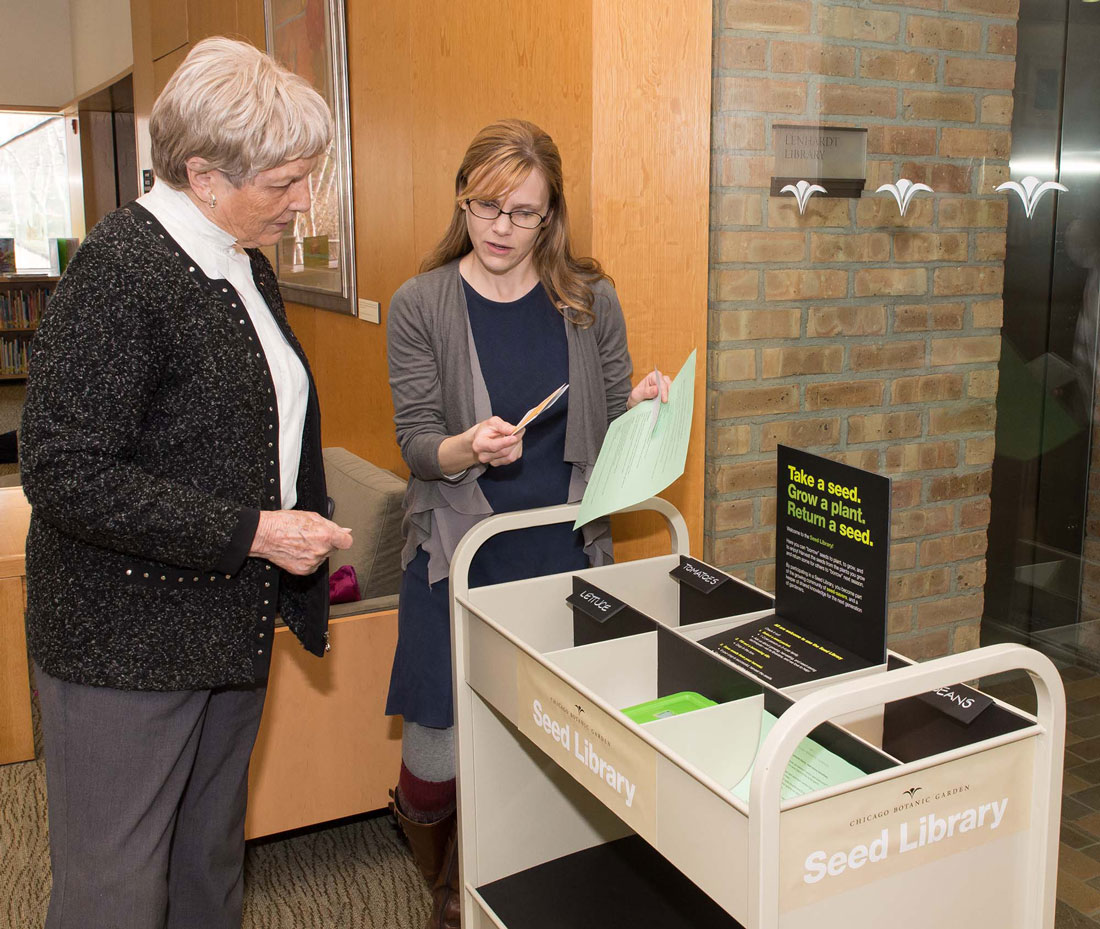By Claire Donnelly
This library never worries about anything overdue. But expect to give back from what you borrow.
This is a seed library established by Leora Siegel, director of the Chicago Botanic Garden’s Lenhardt Library. Visitors can “check out” different seed varieties like heirloom tomatoes, mesclun greens, peppers, peas and beans.
The library, housed on a cart, is open to anyone who is interested in borrowing seeds. The cart is divided by seed type and offers a rotating selection based on the growing season and availability of different varieties.
Siegel said the idea is for community members to plant the seeds and harvest them. Then, save some of the plants’ seeds and return them to the botanic garden so the library can grow.
“We’ve had a really nice response so far. Quite a few people have borrowed seeds,” Siegel said. She established the library two weeks ago – just in time for spring – by dividing large commercial seed packets and repackaging them into smaller portions suitable for home gardens.
Seed Savers Exchange in Iowa and Renee’s Garden in California donated most of the seeds, heirloom varieties that have a history of being passed down within a family or community. Open-pollinated varieties that are available have been pollinated by natural means. The botanic garden seed library does not offer any cultivars or hybrid varieties, produced through selective breeding.
In the future, the library will also contain seeds saved from fruits and vegetables grown at the botanic garden, Siegel said.

“This is fabulous because I’ve actually been thinking of growing some plants this year,” said Allison Wilmes, a visitor to the garden. Wilmes picked out some mesclun greens seeds.
Seed saving is the practice of retaining some seeds from plants in order to grow the same plants the following year. The method for saving seeds differs from plant to plant. There are two main plant varieties when it comes to seed saving—wet fruited crops and dry fruited crops, according to Tim Johnson, head of preservation at Seed Savers Exchange.
Wet-fruited crops, like tomatoes and watermelon, are so called because the mature seeds need to be dried out after they are harvested, while dry-fruited crops, like sorghum and wheat, have seeds that are already dry when they are mature.
Seed saving is a practice with a long history, one that Johnson said could probably be traced back to almost the beginning of agriculture, when early humans were learning how to simplify the foraging and gathering process.
“We sort of take for granted the fact that we can buy seeds year-round, 24 hours a day, seven days a week,” Johnson said. “It [wasn’t] always that way. You used to, if you wanted carrots, save some carrot seeds so that you had them to grow the next year.”
Johnson said gardeners save seeds for many different reasons–some because it’s more cost-effective, some because they want to preserve genetic diversity and some because they feel like seed saving helps them establish a stronger connection with their food.
Understanding seed saving and where seeds come from can be an important part of the conversation about sustainability and local food, according to Johnson.
Johnson said many seeds are grown in other regions of the country or overseas before they are shipped to their final destinations, a process with a significant carbon footprint. By contrast, seed libraries encourage communities to produce their own food using seeds that are cultivated and shared.
“Saving seeds is part of the food cycle,” said Siegel. “And we’re trying to encourage people to learn about that.”

